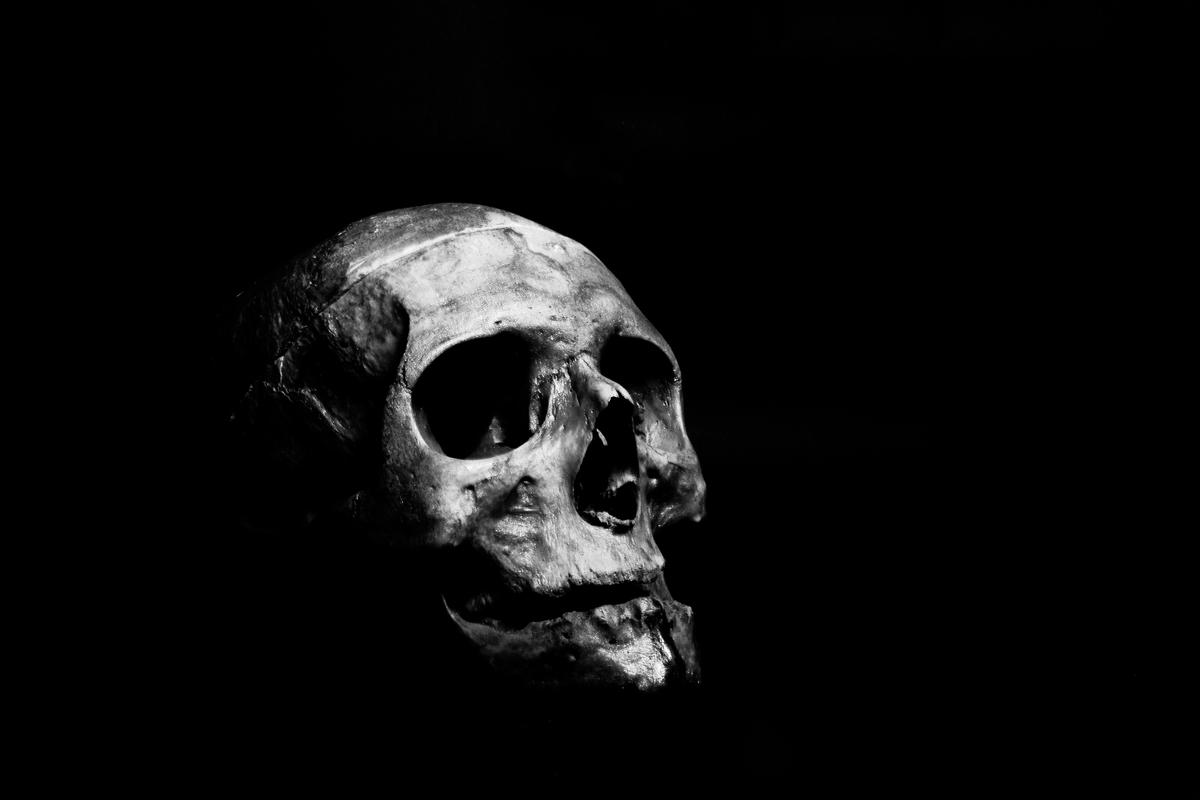Demystifying the profound depths of the human subconscious is essentially an attempt to understand the intricate narratives of dreams. Remarkably, these dreams often carry echoes of experiences buried deeply in our consciousness, particularly those of traumatic events. A recurring theme in the dreams of individuals healing from trauma is ‘death’. Unraveling the unseen threads of these death-related dreams becomes a journey through trauma, adaptation, and recovery. The following discourse offers an explorative insight into the unseen realm of trauma, the enigmatic symbolism of dreams, and their interconnectedness, followed by therapeutic approaches geared towards healing and rebirth.
Understanding Trauma
Understanding Trauma: An Overview
Trauma refers to a distressing or disturbing experience that causes significant physical, emotional, or psychological harm. This can encompass a wide array of experiences, from acute incidents such as physical or sexual assault, car accidents, or war experiences, to chronic or prolonged exposures such as domestic violence, child abuse, or living in high-crime environments. Even severe suffering from diseases or dying situations can also lead to trauma.
Causes and Types of Trauma
Trauma can be sparked by a single egregious incident, or slowly mount over time from prolonged exposure to stressful or painful circumstances. The causes of trauma are multifarious, but often include acts of violence, abuse, neglect, disasters, accidents, or life-threatening illness. There are several classifications of trauma which include: Acute Trauma, resulting from a single stressful or dangerous event; Chronic Trauma, resulting from repeated and prolonged exposure to highly stressful events; and Complex Trauma, which results from exposure to multiple traumatic events.
Impacts of Trauma on Life and Health
The aftermath of trauma can have profound physical, psychological, and emotional impacts. Physically, trauma can lead to chronic pain, sleep disturbances, fatigue, and other health conditions. Emotionally, trauma can cause feelings of fear, guilt, anger, sadness, and despair. Psychologically, trauma can result in symptoms of stress disorders such as Post-Traumatic Stress Disorder (PTSD), depression, anxiety, and substance abuse disorders. It can also affect cognitive functions leading to memory and attention difficulties.
Trauma and Dreams of Death
Trauma can impact the psyche in complex ways, shaping both conscious thoughts and unconscious processes, such as dreaming. Traumatic experiences, especially those linked to death or the threat of death, can lead to recurring dreams or nightmares about death. One theory is that this is a form of psychological processing, a way for the unconscious mind to confront, understand, and integrate the traumatic event.
Consequently, death in dreams doesn’t always symbolize an actual physical death but can represent the ending or loss of something, reflecting the deep change or disturbance in the individual’s life due to the traumatic experience.
The Trauma and Sleep Connection
Sleep is often disrupted in those who have experienced trauma, with nightmares being a common symptom of PTSD. These can often involve re-experiencing the traumatic event or through symbolic content, such as dreams of death.
The occurrence and intensity of such dreams can be influenced by various factors such as the severity of the traumatic experience, the individual’s pre-existing mental health conditions, their coping skills, and their level of social support. Trauma and dreams of death—while distressing—can provide key insights into the individual’s well-being, potentially illuminating pathways to therapeutic intervention.
Exploring the Impact of Trauma Therapy
Trauma-focused cognitive-behavioral therapy (TF-CBT), exposure therapy, and Eye Movement Desensitization and Reprocessing (EMDR) are frequently utilized treatments when dealing with trauma, particularly dreams associated with trauma. The main goal of these therapeutic approaches is to aid individuals in processing their traumatic experiences, mitigating reactions to traumatic stress, and regaining their previous functional levels. During therapy, dreams involving death can be explored and interpreted in order to identify unresolved issues and fears. This exploration further aids in addressing these concerns in a secure and supportive therapeutic environment.

Interpretation of Dreams
The Significance of Dream Interpretation
The interpretation of dreams forms a crucial component of psychological studies and cultural research. Throughout history, people have sought to find meaning in their dreams, with the interpretations varying greatly across different cultures and eras. Sigmund Freud(1856–1939), considered the pioneer of psychoanalysis, proposed that dreams serve as a ‘royal road to the unconscious’. According to Freud’s dream interpretation theory, dreams have the potential to reveal hidden emotions, unvoiced desires, and unresolved inner conflicts.
Focus on Death-Related Dreams
A subset of dream interpretation that often sparks intense conversations is the interpretation of dreams related to death. Contrary to common belief, dreams about death are not necessarily a bad omen or an impending doom. Instead, dream interpreters often view them as portraying a significant transformation, change, or the end of something.
Complicated Relationship between Trauma and Dreams
Trauma, given its severe impact on an individual’s psychophysiological state, can significantly influence dreams. Various studies have shown that traumatic events can manifest in one’s dreams, offering a direct reflection of the survivor’s emotional state.
Trauma and Death-Related Dreams
There is a substantial field of research dedicated to exploring the connection between trauma and dreams of death. Trauma survivors, or individuals who have endured significantly distressing experiences, may have repeated dreams related to death; these dreams could be connected to their subconscious coping mechanisms or processing of trauma.
When an individual experiences trauma, their dreams may reflect the emotional and psychological distress characterized by such an event. For example, dreaming about death may be symbolic of the individual’s feelings of fear, hopelessness, or powerlessness associated with the traumatic incident.
Influence of PTSD on Dreams
These dreams of death can also be related to Post-Traumatic Stress Disorder (PTSD), a disorder that arises in some individuals who have experienced a traumatic event. PTSD can cause nightmares that relive the trauma, often containing elements of death or dying, reflective of the real-life fear experienced.
Case Studies on Trauma and Death-Related Dreams
Dr. Ernest Hartmann conducted studies in the wake of the Three Mile Island nuclear disaster and found that residents who were most affected by the disaster were having nightmares of death and destruction. Similarly, studies of Vietnam War Veterans found that those suffering from PTSD frequently had death-themed dreams.
Potential Psychological Interpretations
Psychologists suggest that death-themed dreams following trauma may reference an individual’s feeling of a loss of control or that a part of them has metaphorically “died.” It could also symbolize their fear associated with the traumatic event’s recurrence.
Insights from Dream Therapy
Dream therapy, a form of psychotherapy that uses dream interpretation as a foundation for understanding an individual’s subconscious thoughts and emotions, can be beneficial. Therapeutic work on death-related dreams can help victims of trauma by giving them a safe space to process these dreams and their implications.
The correlation between dreams of death and trauma can be multidimensional and intensely personal. Nevertheless, unearthing such connections can enable professionals to provide more effective psychological assistance to those recovering from trauma. The intricate link between trauma and recurrent dreams about death can provide great insight into deeply-rooted fears and emotional disturbances. By probing into these, it’s possible to find a path towards resolving them.

Photo by sharonmccutcheon on Unsplash
Connection between Trauma and Dreams
Grasping the Concept of Trauma and its Dream Impact
In psychology, trauma refers to a reaction to an event that is so distressing or shocking that coping mechanisms fail, leading to feelings of fear, helplessness, and horror. This distressing experience imprints on the individual’s mental state, often causing modifications to dream patterns and content.
The Link Between Trauma and Death Dreams
One interesting aspect of trauma’s after-effects is frequent dreams about death, often noticed among the survivors of trauma. These dreams can range from re-living life-threatening instances of the traumatic event to symbolically embodying the emotions attached to the trauma, including fear, grief, and disconnect.
While such dreams can be deeply unsettling and disruptive to sleep, leading to further aggravation of the trauma, they could potentially offer deep insights into a person’s subconscious fears and emotional baggage.
The Manifestation of Trauma in Nightmares and Dream Suppression
Unresolved trauma frequently takes the form of nightmares in many survivors, leading to sleep disruption and high levels of distress. Individuals suffering from Post-Traumatic Stress Disorder (PTSD) often find themselves in a vicious cycle, reexperiencing the traumatic event in a nightmarish form, which exacerbates feelings of fear, terror, and anxiety.
Conversely, some individuals may exhibit dream suppression, an avoidance strategy aimed at reducing the distress or pain associated with traumatic dreams or nightmares. However, this approach often backfires as it could lead to a deficiency in REM sleep, potentially promoting various mental health issues long-term.
Using Dreams as a Mechanism to Process Trauma
Despite the distress they cause, dreams, including those about death, can become a platform for processing trauma. These dreams can offer a safe environment in which to face and work through the trauma. Many therapists emphasize the value of these dreams in trauma therapy, as understanding the symbols and emotions they contain may lend insight into the fears accompanying the trauma, thus catalyzing the healing process.
It’s important to note that anyone grappling with traumatic dreams should seek assistance from mental health professionals. Robust therapies, such as Cognitive Behavioral Therapy (CBT) and Eye Movement Desensitization and Reprocessing (EMDR), have shown success in alleviating trauma-related sleep disturbances. Open, supportive, and non-judgmental discussions about these dreams can also be instrumental in aiding trauma recovery.

Case Studies
Case Study: Death Dreams in a Combat Veteran
One particular case study involved a combat veteran who, after experiencing intense action during his deployment, began having recurring nightmares about death. These dreams incorporated elements of his traumatic experiences, including gunfire, explosions, and the loss of his fellow soldiers. In addition to these distressing dreams, the veteran began to display indicators of a larger issue—Post-Traumatic Stress Disorder (PTSD). The dreams of death were seen as a critical aspect of his trauma and were utilized in his therapeutic treatment plan.
Case Study: Trauma from Childhood Abuse and Death Dreams
Child abuse is a severe form of trauma with long-lasting effects on a person well into adulthood. One case study involves a woman experiencing recurring dreams about death. Her dreams typically involved people close to her dying violently or unexpectedly. Regarding her personal history, it was found that she sustained severe physical and emotional abuse throughout her childhood. The abuse was identified as the traumatic root of her dreams related to death.
Case Study: Car Accident Survivor and Dreams of Dying
Trauma can come in many forms, not just from abuse or fighting in a war. In another case study, a survivor of a severe car accident frequently reported dreams related to death. In her dreams, she was often a disembodied specter watching her own funeral or her own dead body. The car accident, where she nearly died herself, marked the starting point of these dreams.
Case Study: Personal Health Scare and Death-Related Dreams
In another case, an individual began having frequent dreams about death after a personal health scare. After surviving a heart attack, he started having disturbing dreams about his own death, typically dying from a sudden cardiac event like the one he had experienced. His traumatizing ordeal with tangible death seemingly precipitated these dreams.
In numerous instances, it has been found that traumatic experiences can deeply affect an individual’s dreams, often leading to recurring nightmares related to death. The nature of the trauma differs for each person – from combat situations, trauma during childhood, near-death accidents, to personal health threats. Regardless of the differing scenarios, the individual’s dreams consistently showed a death-related connection. These findings underline the significant psychological impact that trauma can have on a person’s mind.

Photo by ahmedadly on Unsplash
Psychological Coping Mechanisms and Treatment
Understanding the Connection between Trauma and Dreams of Death
It is well-documented that trauma can drastically alter an individual’s mental well-being, commonly triggering incredibly vivid and troubling dreams, or even nightmares. These often involve scenarios of death or severe harm, echoing the distress the person has undergone. According to psychologists, these representations signal the mind’s effort to assimilate and come to terms with the traumatic event in the safe confines of sleep.
Psychological Coping Mechanisms
Some coping strategies can help people manage the negative impacts of trauma and the related dreams of death. One common method is practicing good sleep hygiene to reduce the likelihood of nightmares. This includes maintaining a regular sleep schedule, reducing caffeine and alcohol intake, and creating a relaxing sleep environment.
Another recommended strategy is engaging in relaxation exercises, such as deep breathing or progressive muscle relaxation. These techniques can help manage stress and anxiety, potentially reducing their impact on dreams.
Journaling can also be a beneficial coping mechanism. Recording dreams and feelings can aid in recognizing and understanding dream patterns. By identifying common elements in these dreams, individuals can start processing these recurring images and themes, leading to decreased intensity or frequency over time.
Professional Therapeutic Approaches
There are various professional approaches for dealing with trauma and consequent nightmares about death. Cognitive Behavioral Therapy (CBT) is one such approach. This therapy helps individuals understand how their thoughts and feelings influence their behaviors, allowing them to change their reactions to negative stimuli.
Image Rehearsal Therapy (IRT) is another technique often used to treat individuals with recurring nightmares. This approach involves rewriting the narrative of the disturbing dream while awake to make it less threatening. The new narrative is then rehearsed mentally, which may eventually replace the original nightmare.
Eye Movement Desensitization and Reprocessing (EMDR) is used primarily for PTSD patients, which involves processing traumatic memories in a less distressing way through the use of guided eye movements.
Finally, medication options such as Prazosin are commonly prescribed to reduce nightmares related to trauma.
Conclusion
Understanding the connection between trauma and dreams of death is essential for devising effective coping strategies and therapeutic approaches. Both self-help and professional help can play a crucial role in healing and recovery. It’s essential to remember that recovery takes time but is achievable and worthwhile.

Overall, trauma’s subjective nature and the dense symbolism of dreams make their relationship complex yet captivating. Life’s traumatic events can leave profound imprints on an individual’s psyche, sometimes manifesting as death-related dreams and necessitating coping mechanisms. This exploration underscores the power and potential of psychological resilience and therapeutic interventions. Again, understanding dreams, particularly those related to death, offers profound insight into our subconscious responses to trauma. It’s a gateway towards healing, providing the impetus for transforming adversity into strength. These discussions act as a beacon of hope, a demonstration of human resilience in the face of traumatic experiences, and a testimony to the transformational power contained within our dreams.
